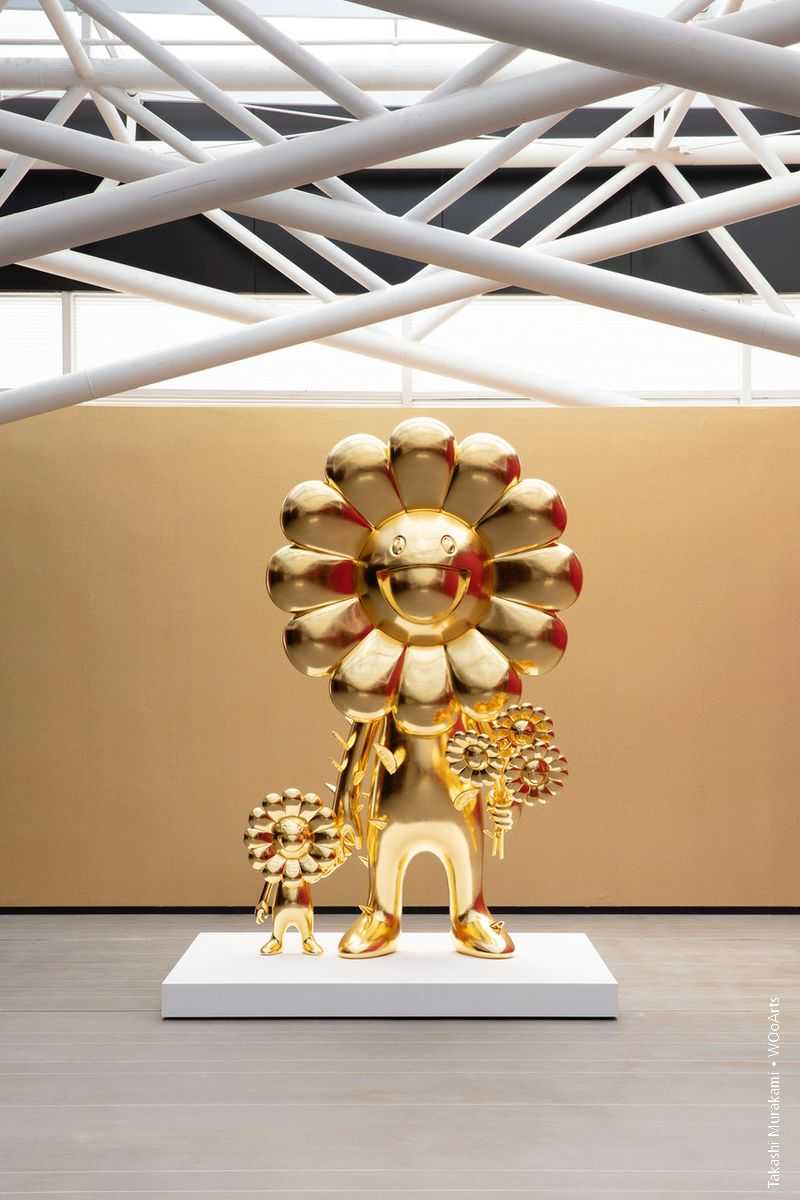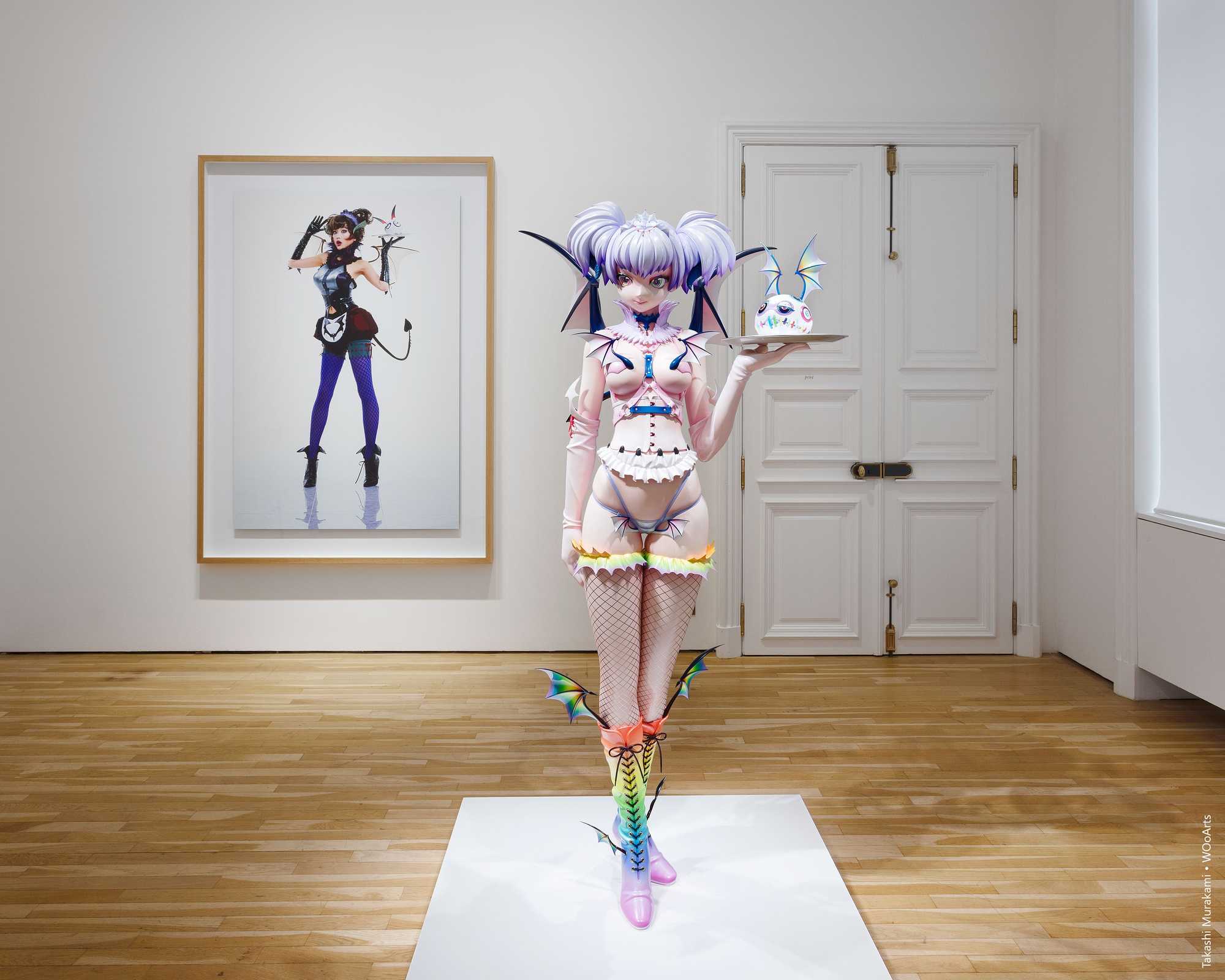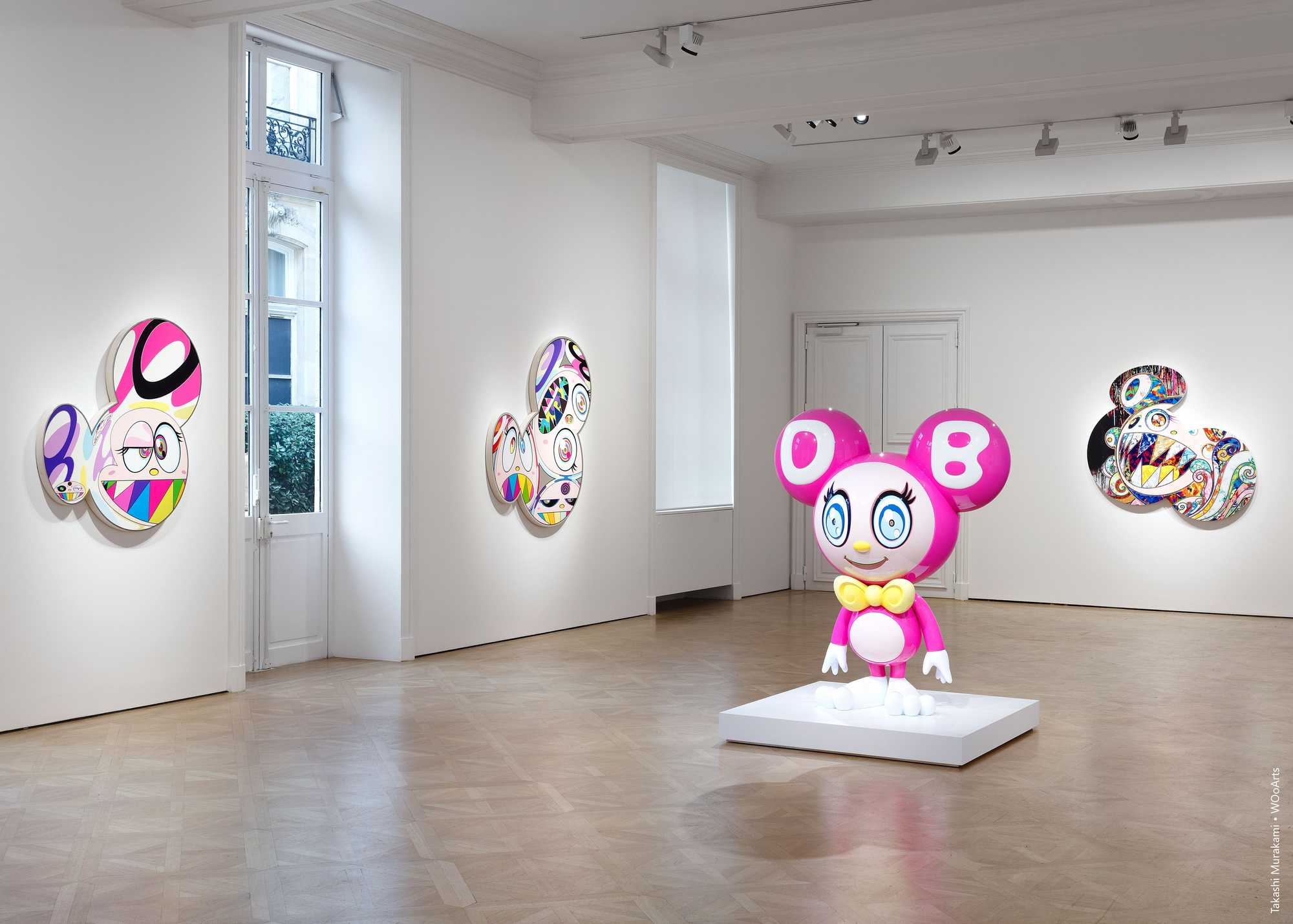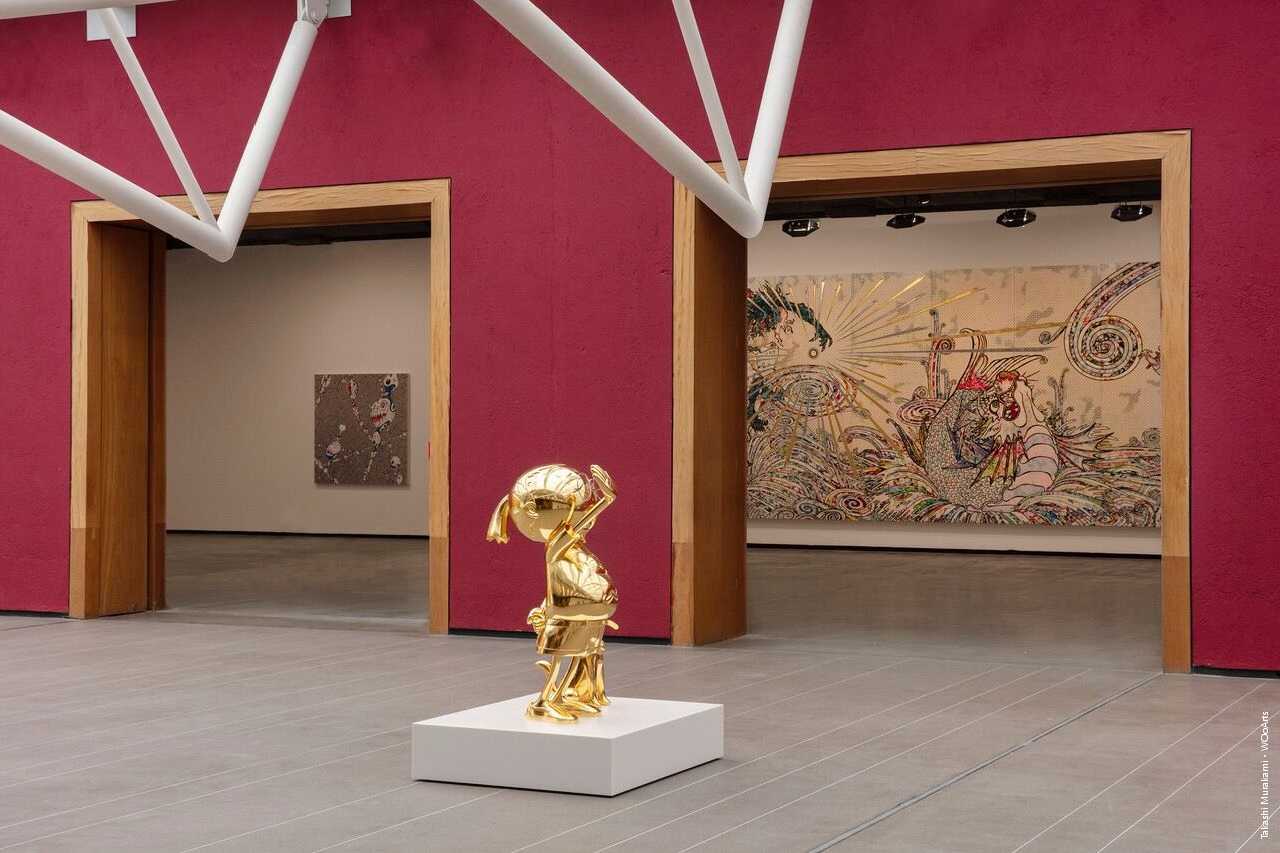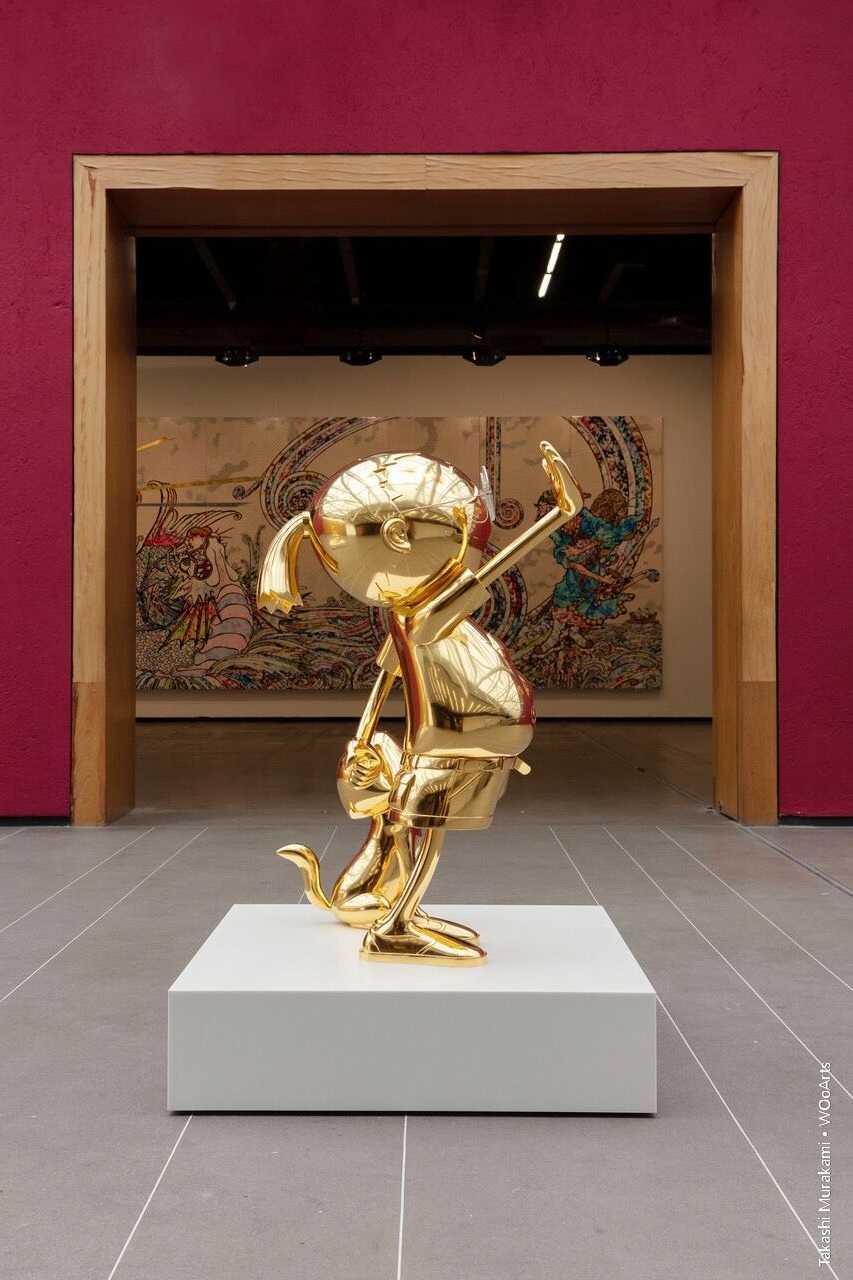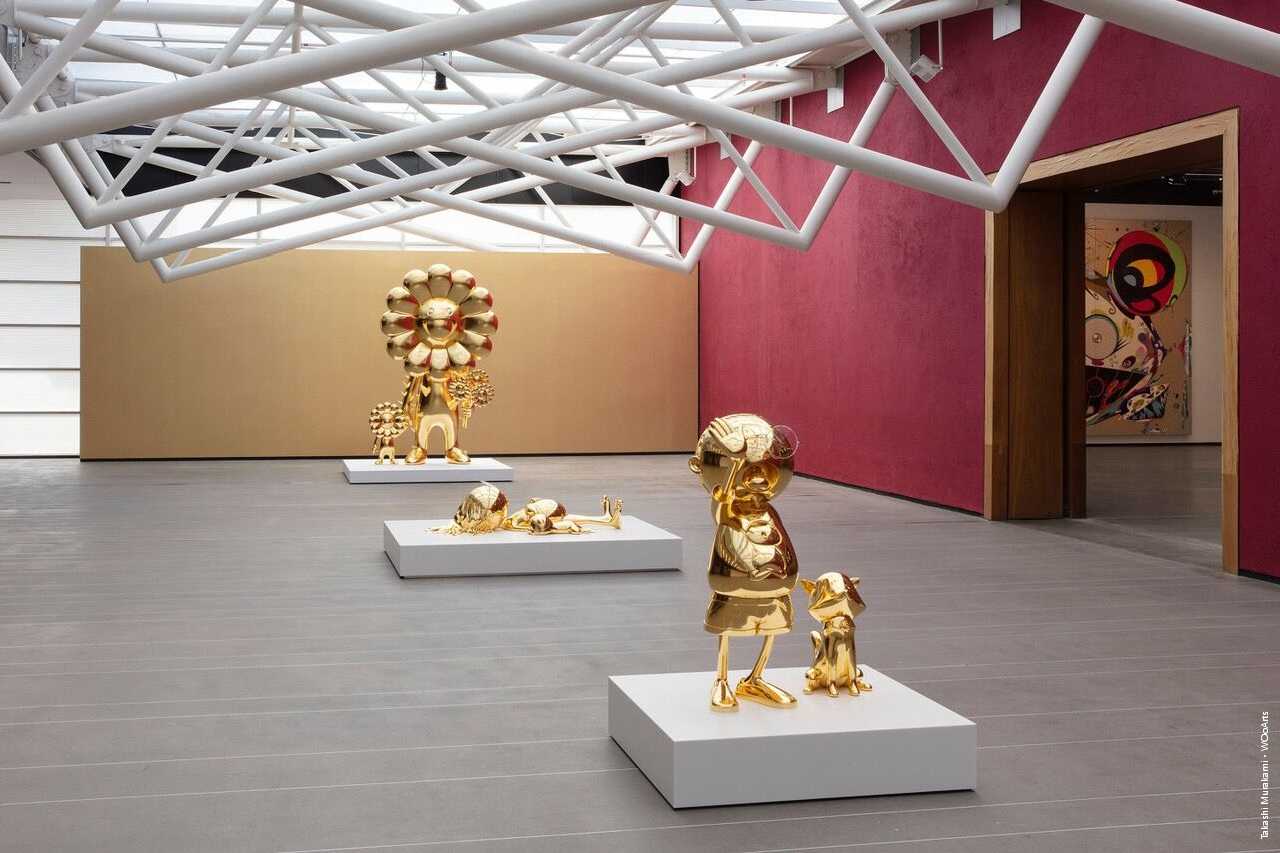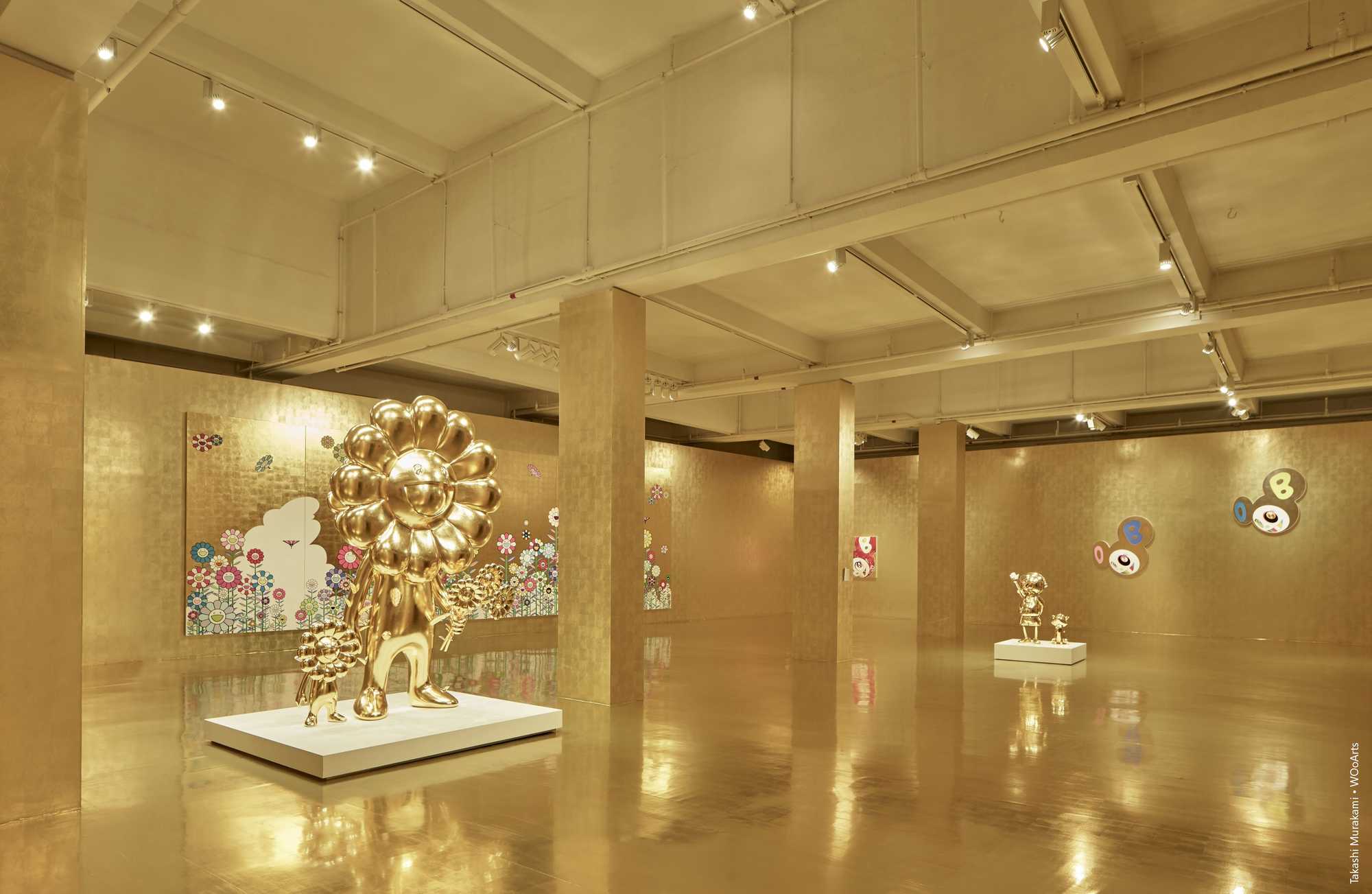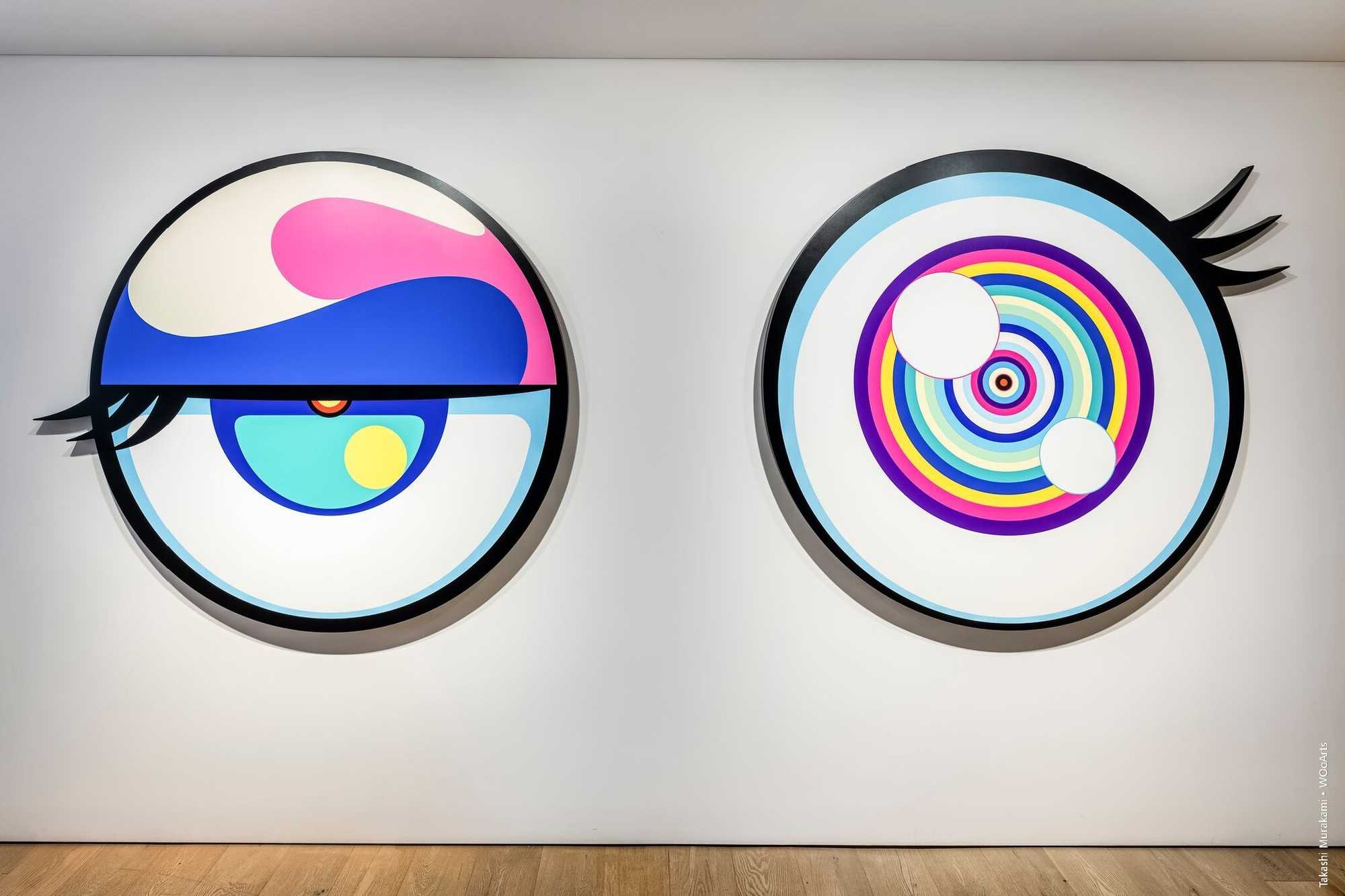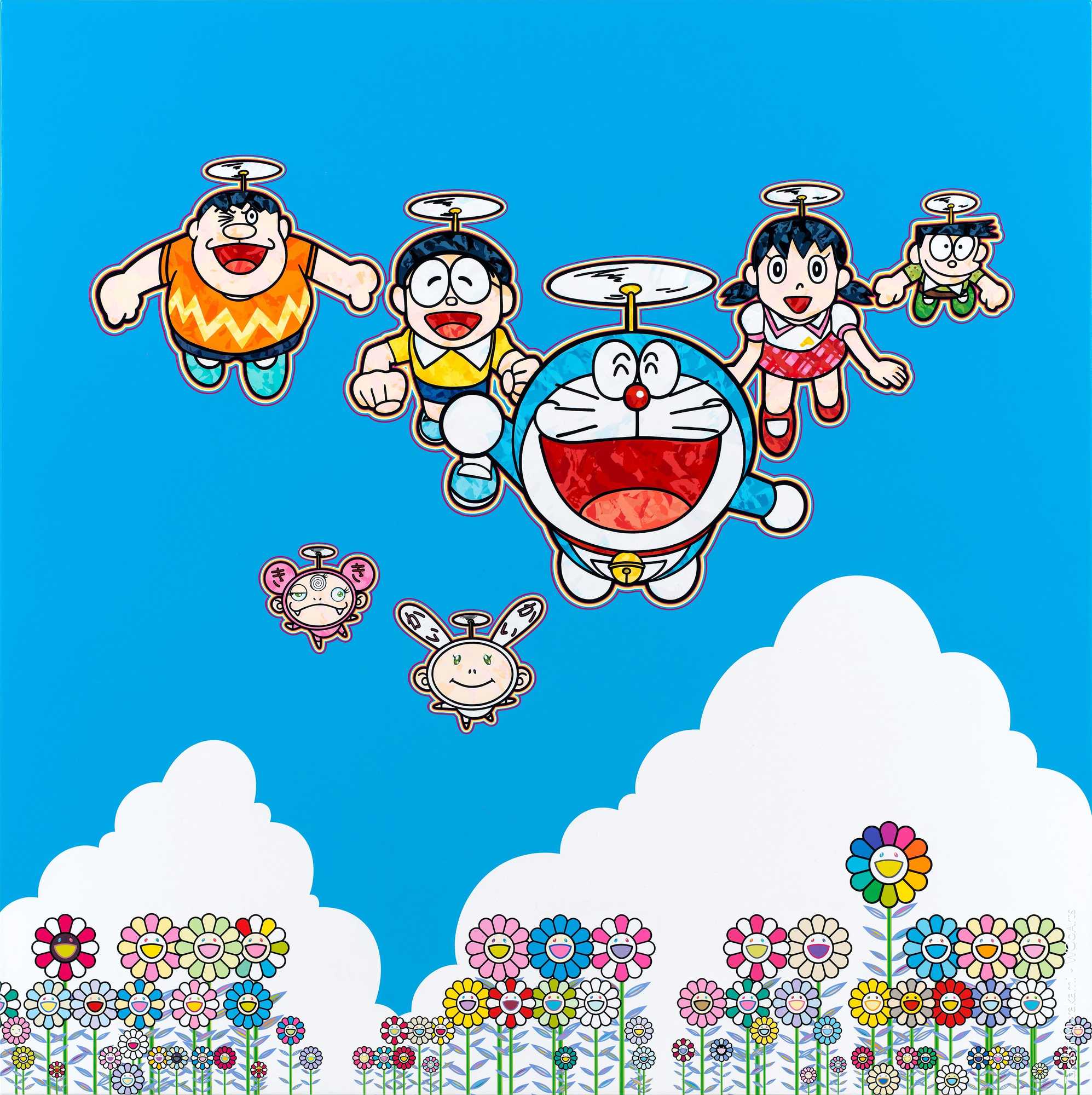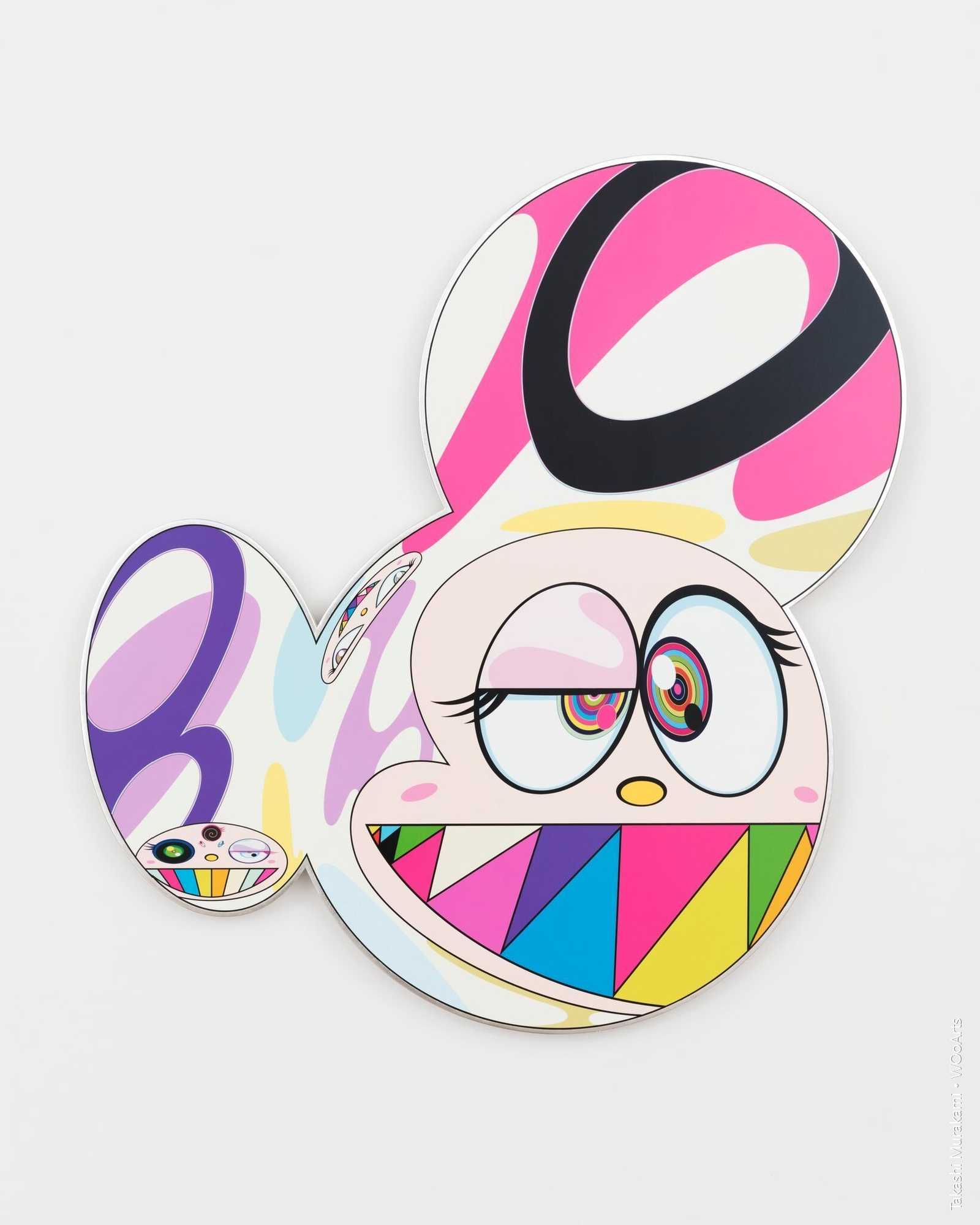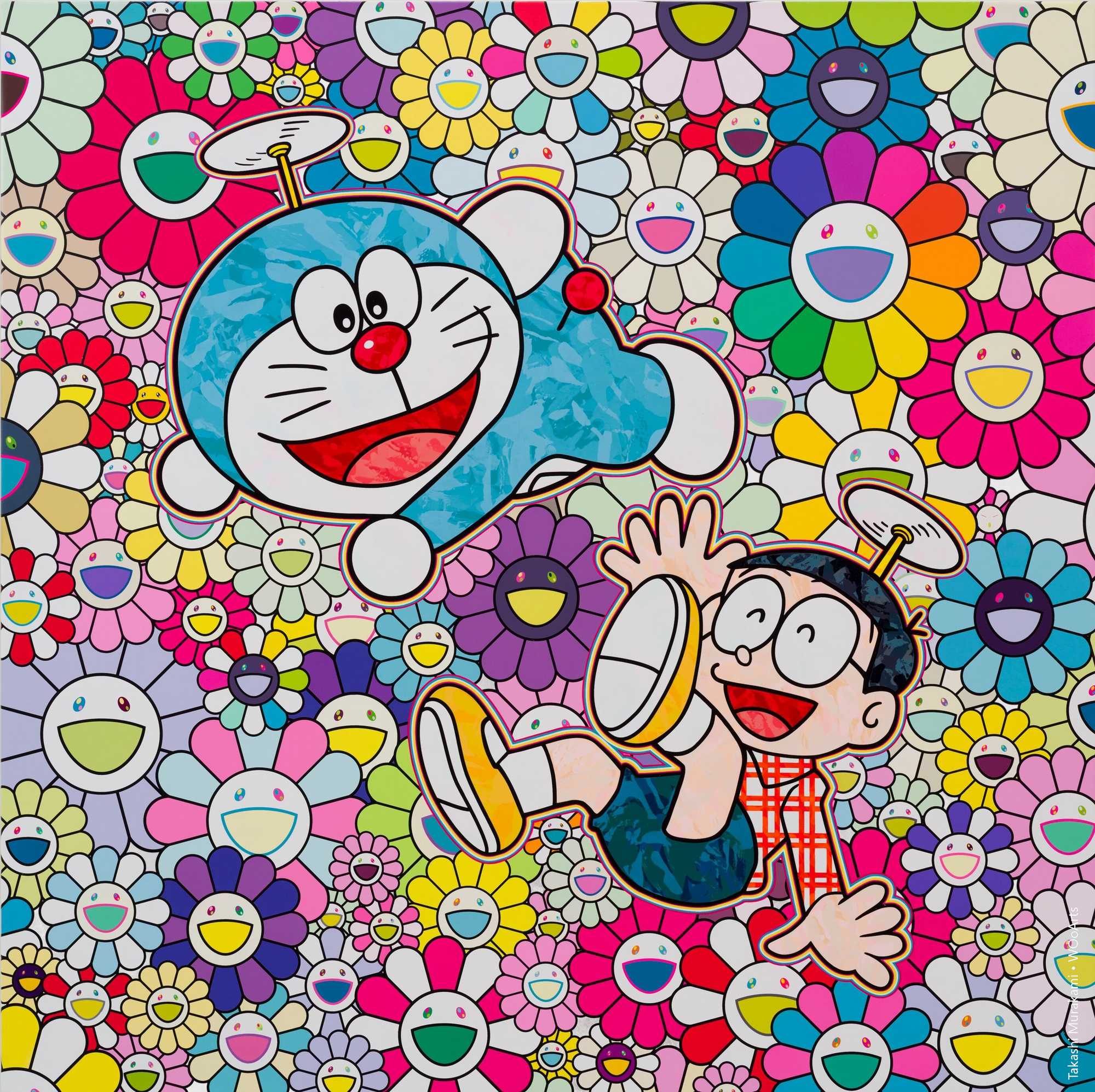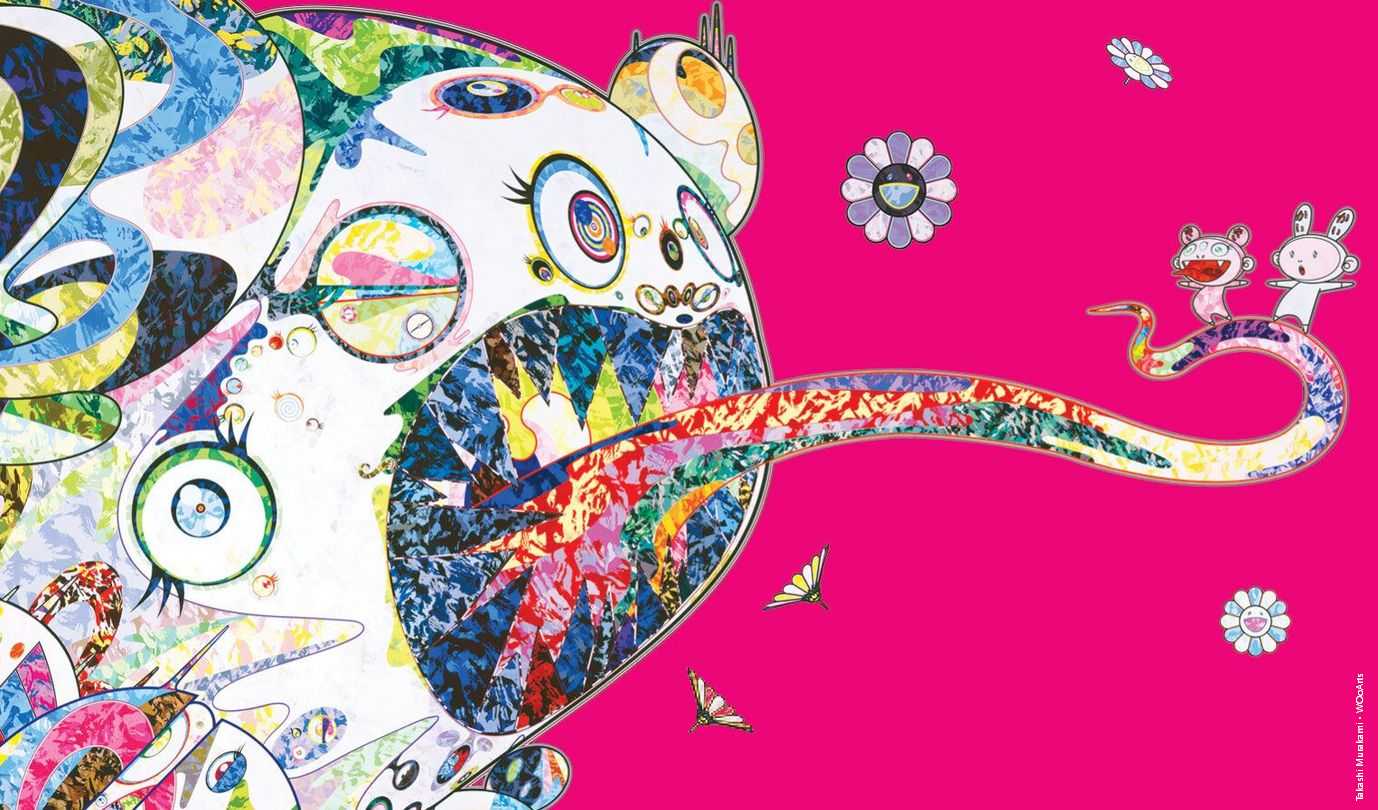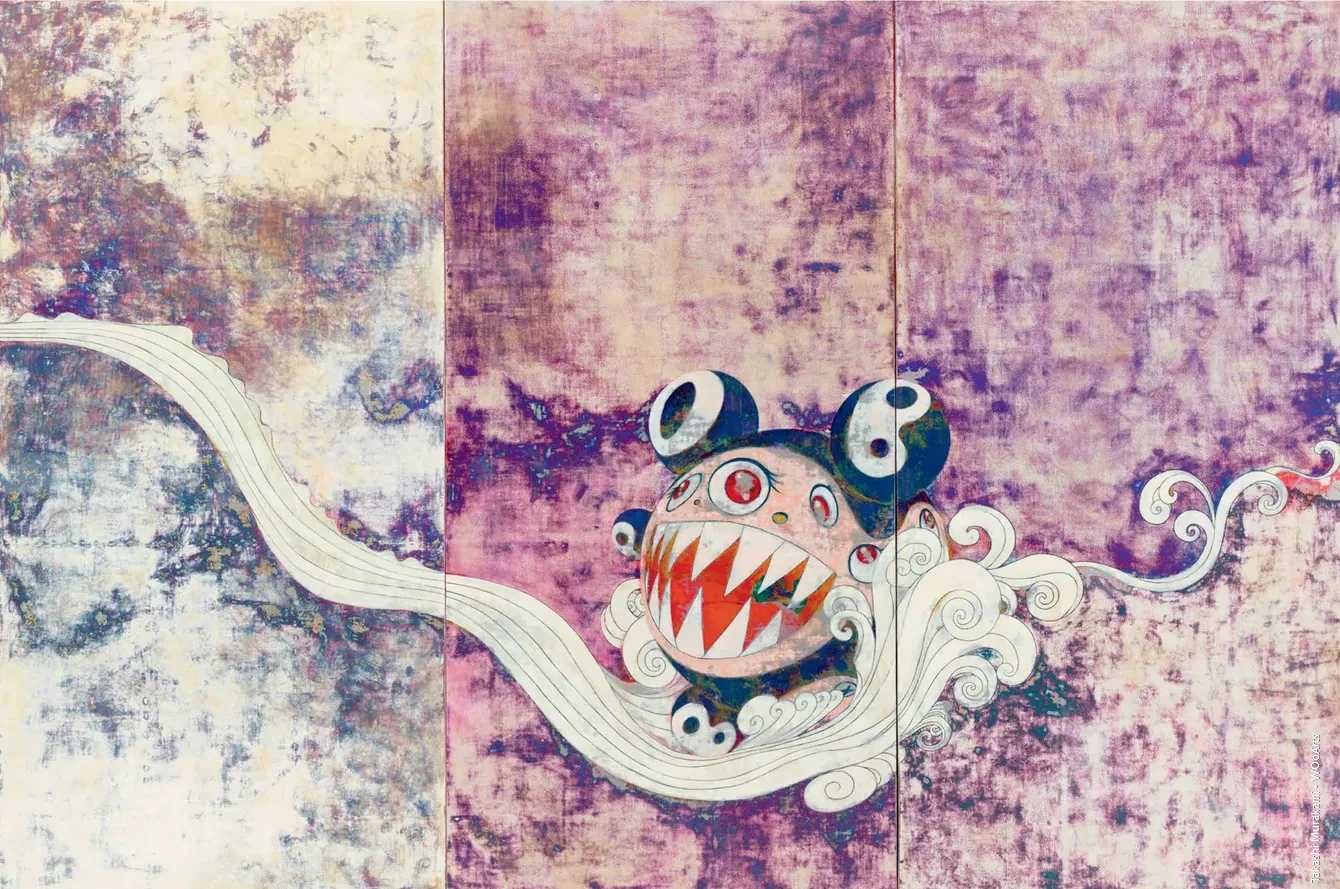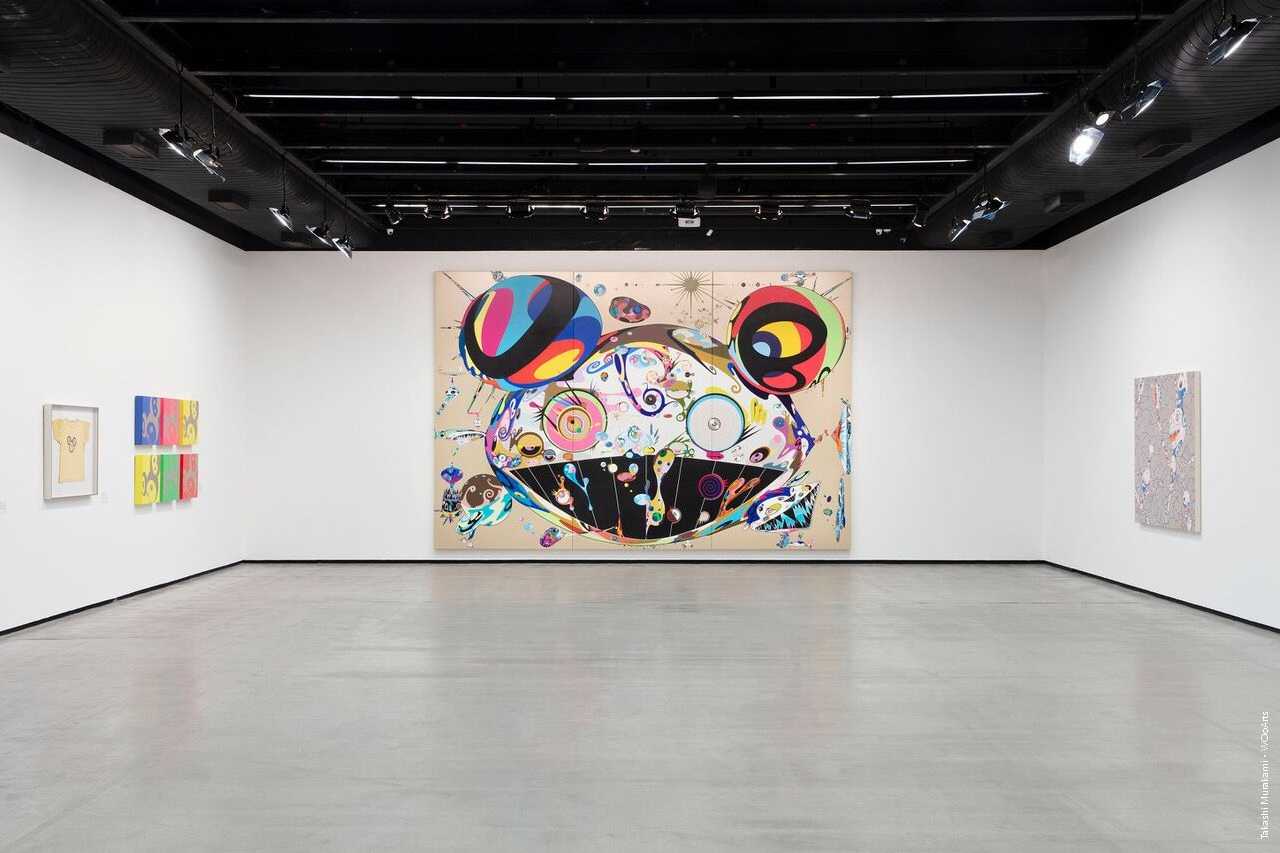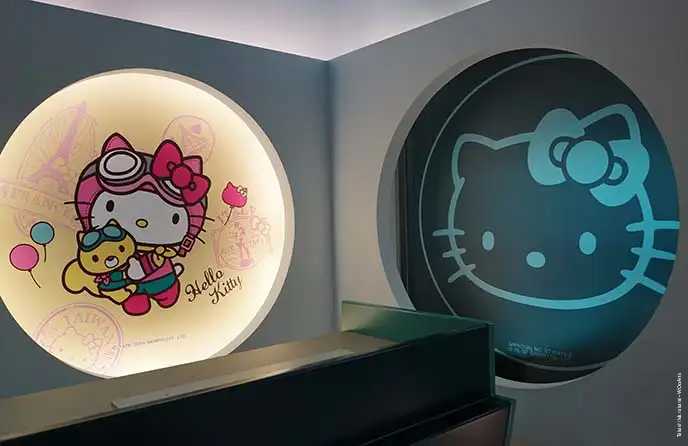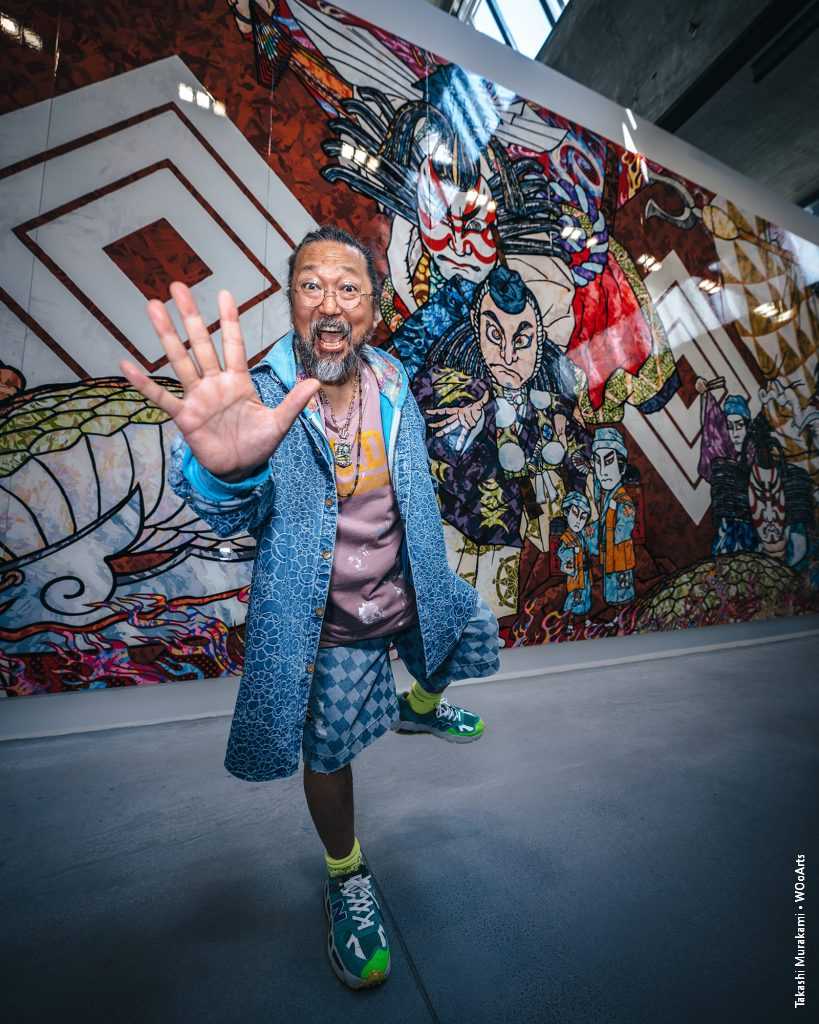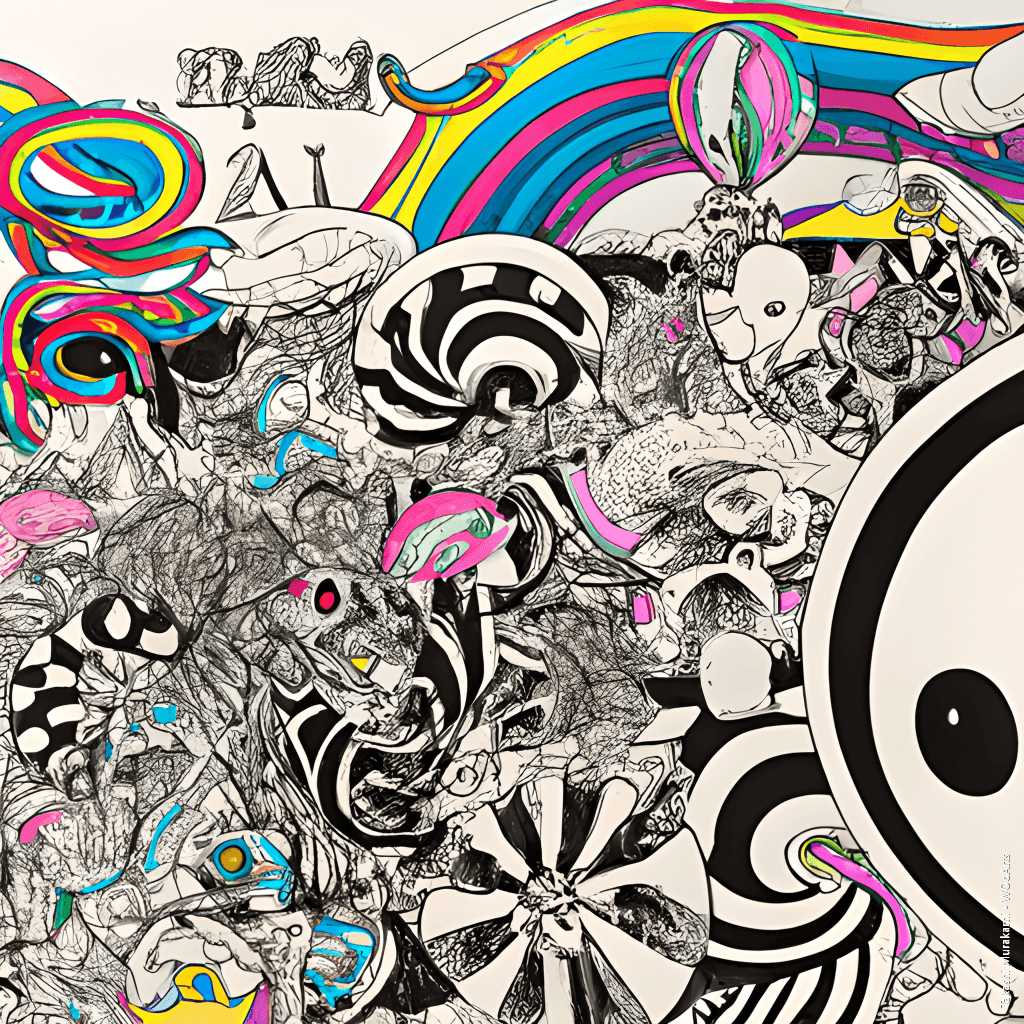Superflat Euphoria: The Artistry of Takashi Murakami Unveiled

Takashi Murakami’s art is a kaleidoscope of influences, a vibrant fusion of tradition and contemporary expression. His Superflat aesthetics, celebration of Kawaii culture, and synthesis of high and low art challenge conventional notions, creating a space where accessibility and depth coexist. Murakami’s ability to seamlessly traverse between canvases and immersive installations solidifies his legacy as an artist who not only captures the zeitgeist but actively shapes it. As his whimsical characters continue to captivate audiences worldwide, Murakami remains an icon of artistic innovation and cultural synthesis.

- Superflat Aesthetics: Murakami reinterprets traditional Japanese two-dimensionality in the Superflat movement.
- Kawaii Culture: Irresistible cuteness permeates characters, adding layers of innocence to cultural commentary.
- High and Low Culture Synthesis: A seamless blend of fine art and popular culture challenges artistic hierarchies.
- Technicolor Palette: Murakami’s fearless use of bold, vibrant colors creates an exuberant visual experience.
- Sculptural Installations: Immersive environments transform spaces, blurring boundaries between art and experience.

Takashi Murakami, the maestro of the Superflat movement, has carved a unique niche in the contemporary art scene. Blending pop culture, traditional Japanese aesthetics, and a distinctive visual vocabulary, Murakami’s art is a celebration of color, whimsy, and cultural synthesis. In this exploration, we dissect the intricacies of Murakami’s art style, delving into the captivating world where high and low culture collide in a harmonious burst of creativity.

I. Superflat Aesthetics: At the core of Murakami’s art is the Superflat movement, a term he coined to describe the flattened, two-dimensional quality of traditional Japanese art. Murakami reinterprets this aesthetic, infusing it with contemporary elements, resulting in a seamless fusion of past and present.
II. Kawaii Culture: Kawaii, or the culture of cuteness, is a pervasive theme in Murakami’s works. His characters, including the iconic Mr. DOB and Kaikai Kiki creatures, exude an irresistibly cute charm. The juxtaposition of innocence and playfulness with deeper cultural commentary creates a multi-layered viewing experience.
III. High and Low Culture Synthesis: Murakami’s art is a masterful blend of high and low culture. From collaborations with Louis Vuitton to creating album covers for Kanye West, he bridges the gap between fine art and popular culture. This synthesis challenges traditional hierarchies and invites a wider audience to engage with contemporary art.
IV. Technicolor Palette: A hallmark of Murakami’s style is his vibrant and technicolor palette. Neon hues, electric blues, and candy-colored landscapes saturate his canvases, infusing a sense of exuberance and energy. The artist’s fearless embrace of bold colors contributes to the visual intensity of his works.
V. Sculptural Installations: Murakami’s art transcends traditional canvases. His sculptural installations, often featuring oversized and fantastical characters, create immersive environments. These installations transform exhibition spaces into whimsical dreamscapes, blurring the boundaries between art and the viewer’s physical experience.
Takashi Murakami: The Superflat Artist Who Blurs the Boundaries Between Art and Commerce
– Takashi Murakami is a Japanese contemporary artist who is known for his superflat style, which merges elements from anime, manga, kawaii, and otaku subcultures with motifs and techniques from historical Japanese artistic movements.
– Murakami’s superflat art challenges the distinction between high and low art, and critiques the consumerism and globalization that have shaped Japan’s postwar identity and its relationship with the West.
– Murakami’s superflat art is influenced by his personal experience and his academic background, and it is also a result of his art-as-business approach and his use of mass media and pop culture icons.
– Murakami’s superflat art has been met with both praise and criticism, and he has been a influential and controversial figure in the contemporary art world.
Takashi Murakami is one of the most influential and controversial contemporary artists in Japan and the world. He is widely recognized for his ability to adapt the aesthetics of Japanese traditional art to operate within the context of popular culture. His style, which he calls superflat, merges elements from anime, manga, kawaii, and otaku subcultures with motifs and techniques from historical Japanese artistic movements such as Nihonga and Ukiyo-e. By doing so, he not only challenges the distinction between high and low art, but also critiques the consumerism and globalization that have shaped Japan’s postwar identity.
Murakami’s superflat art is characterized by bright colors, flat compositions, and eccentric characters that often combine cuteness and violence. His works range from paintings and sculptures to fashion accessories and merchandise, and he collaborates with various celebrities and brands, such as Louis Vuitton, Kanye West, and Pharrell Williams. He also runs his own art production company, Kaikai Kiki, which employs hundreds of assistants and operates as a factory, a studio, and a business. Murakami has been compared to Andy Warhol for his art-as-business approach and his use of mass media and pop culture icons. However, unlike Warhol, who celebrated the American dream and consumer society, Murakami exposes the dark side of Japan’s obsession with pop culture and its complex relationship with the West.
Murakami’s superflat art is rooted in his personal experience and his academic background. He was born in Tokyo in 1962, and grew up in a turbulent period of Japan’s history, marked by the student protests, the oil crisis, and the economic boom and bust. He was fascinated by anime and manga, especially the works of Hayao Miyazaki and Akira Toriyama, and he immersed himself in the otaku subculture, which is characterized by fanatical devotion to fictional characters and worlds. He studied Japanese painting at the Tokyo National University of Fine Arts and Music, where he received a Bachelor of Fine Arts degree in 1986 and a Ph.D. in 1993. He was dissatisfied with the conservative and elitist nature of the Japanese art world, and he sought to create a new form of art that would appeal to a wider audience and reflect the contemporary reality of Japan.
Murakami coined the term superflat in the late 1990s, and he used it to describe both his own style and a broader artistic movement that he initiated and curated. He defined superflat as “a means of examining Japanese culture through its visual products, from the Edo period to the present day” [^1^][1]. He argued that Japanese art and culture have always been superflat, meaning that they lack depth, perspective, and hierarchy, and that they are influenced by the flatness of the screen, the paper, and the surface. He also suggested that superflatness is a result of Japan’s trauma from the atomic bombings of Hiroshima and Nagasaki, and its subsequent surrender and occupation by the United States, which led to the loss of its national identity and the adoption of a superficial and homogenous culture.
Murakami’s superflat art is often seen as a critique of Japan’s postwar condition, as well as a commentary on the global art market and the commodification of culture. He uses his superflat characters, such as Mr. DOB, Miss ko2, and Kaikai and Kiki, to parody and subvert the stereotypes and expectations of Japanese pop culture, and to reveal the underlying themes of alienation, anxiety, and violence. He also employs traditional motifs and techniques, such as gold leaf, cherry blossoms, and Buddhist iconography, to reference Japan’s rich artistic heritage and to contrast it with the contemporary pop culture. He further challenges the boundaries between art and commerce by producing and selling his works in various formats and platforms, from museums and galleries to stores and online, and by collaborating with high-end and mainstream brands and celebrities. He thus questions the value and meaning of art in the age of mass production and consumption, and he exposes the power dynamics and cultural differences between Japan and the West.
Murakami’s superflat art has been met with both praise and criticism, and he has been hailed as a genius and a sell-out, a visionary and a provocateur, a leader and a follower. His works have been exhibited and collected worldwide, and he has received numerous awards and honors, such as the Chevalier of the Order of Arts and Letters from France in 2010 and the Aspen Award for Art in 2019. He has also influenced and inspired a generation of artists, both in Japan and abroad, who share his superflat vision and aesthetic. Murakami’s superflat art is undoubtedly a significant and unique contribution to the contemporary art world, and it reflects his personal and artistic journey, as well as the cultural and historical context of Japan and the world.
Takashi Murakami: Pop Iconoclast with Superflat Visions
Takashi Murakami, the Japanese art wunderkind, isn’t just painting flowers and cute characters. He’s wielding them as weapons, playfully skewering pop culture, consumerism, and traditional Japanese aesthetics in a vibrant, high-gloss explosion of color and pattern. Let’s dive into the captivating world of Murakami’s art, exploring the key takeaways that define his iconic “Superflat” style.
- Superflat Rebellion: Murakami challenges artistic hierarchies with his flat, pop-culture-inspired aesthetic, democratizing art and blurring boundaries.
- Pop Culture Warriors: He playfully subverts cute characters and mass-produced icons, raising questions about consumerism and our relationship with pop culture.
- Beyond the Canvas: Murakami’s art spills into fashion, toys, and multimedia, pushing the boundaries of artistic expression and reach.
- East Meets West: He masterfully blends Japanese and Western aesthetics, creating a globally resonant visual language.
Takashi Murakami isn’t just painting pretty pictures; he’s using art as a weapon, playfully dissecting our cultural obsessions and challenging artistic norms. So, the next time you encounter a Murakami mushroom or a smiling flower, remember, there’s more than meets the eye. It’s a vibrant critique, a pop culture wink, and a playful explosion of color, all rolled into one unforgettable Superflat experience.
1. Superflat Revolution: Forget depth and perspective. Murakami’s flat, two-dimensional worlds, inspired by anime and manga, explode off the canvas with their bold outlines, vibrant colors, and repetitive motifs. This “Superflat” aesthetic challenges traditional Western art hierarchies, democratizing art by drawing inspiration from popular culture and everyday life.
- My Loneliness (Kawaii!) (1996): This iconic sculpture, featuring a pink, tear-streaked Hello Kitty surrounded by flowers, epitomizes Murakami’s Superflat style. The cheerful character juxtaposed with the melancholic title creates a complex tension, questioning the emotional undercurrents of cute culture.
2. Pop Culture Warriors: Murakami gleefully appropriates anime, manga, and pop culture icons, transforming them into symbols of consumerism, desire, and existential angst. His playful subversions expose the darker side of mass-produced happiness and challenge our relationship with these ubiquitous images.
- DOB in the Land of Oz (2009-2011): This massive exhibition at the Museum of Modern Art in New York featured Murakami’s signature anime-inspired characters alongside traditional Japanese art forms. The collision of pop culture and high art questioned boundaries and sparked conversations about cultural appropriation and globalization.
3. Beyond the Canvas: Murakami’s artistic tentacles reach far beyond traditional canvases. He collaborates with fashion houses like Louis Vuitton, designs toys and collectibles, and even directs music videos. This multimedia approach blurs the lines between art and commerce, further democratizing his work and reaching a wider audience.
- Louis Vuitton Collaboration (2003): This groundbreaking partnership brought Murakami’s signature colorful flowers and anime characters to luxury handbags and accessories, making luxury fashion more accessible and playful.
4. East Meets West: Murakami masterfully bridges the gap between Eastern and Western aesthetics. He infuses traditional Japanese motifs like floral patterns and ukiyo-e style with contemporary pop culture references, creating a unique visual language that resonates globally.
- Sunflowers (2010): This series of paintings combines traditional Japanese sunflower imagery with bold outlines and vibrant colors, evoking both Van Gogh‘s iconic sunflowers and the flatness of Japanese woodblock prints.
Takashi Murakami was born in Tokyo in 1963 and received his BFA, MFA and PhD from the Tokyo National University of Fine Arts and Music. He has had recent solo shows at Marianne Boesky Gallery, New York (2003); Foundation Cartier pour l’art contemporain, Paris (2002); Museum of Contemporary Art, Tokyo (2001); Museum of Fine Arts, Boston (2001); and Galerie Emmanuel Perrotin, Paris (2001).
In addition to his work as an artist, Takashi Murakami is a curator, entrepreneur, and a student of contemporary Japanese society. In 2000, Murakami curated an exhibition of Japanese art titled Superflat, which acknowledged a movement toward mass-produced entertainment and its effects on contemporary aesthetics. Murakami is also internationally recognized for his collaboration with designer Marc Jacobs to create handbags and other products for the Louis Vuitton fashion house.
Takashi Murakami’s work has been exhibited in prestigious museums all over the world, including the Tokyo Metropolitan Museum of Art; the Museum of Fine Arts, Boston; and a recent solo retrospective exhibition at the Bard College Museum of Art. Through his work, Murakami has played with these oppositions in East and West, past and present, high art and low culture while remaining consistently amusing and accessible. His work morphs the worlds of popular contemporary Japanese cartoons and historic Japanese painting (he is classically trained, with a Ph.D. in the traditional nihon-ga style). His recurring character, Mr. DOB, appears on t-shirts, posters, key-chains, etc. world-wide and has even come to life in the form of one of these 3-D sculptures. Murakami has also curated “Super Flat” an exhibition of contemporary Japanese artists.
